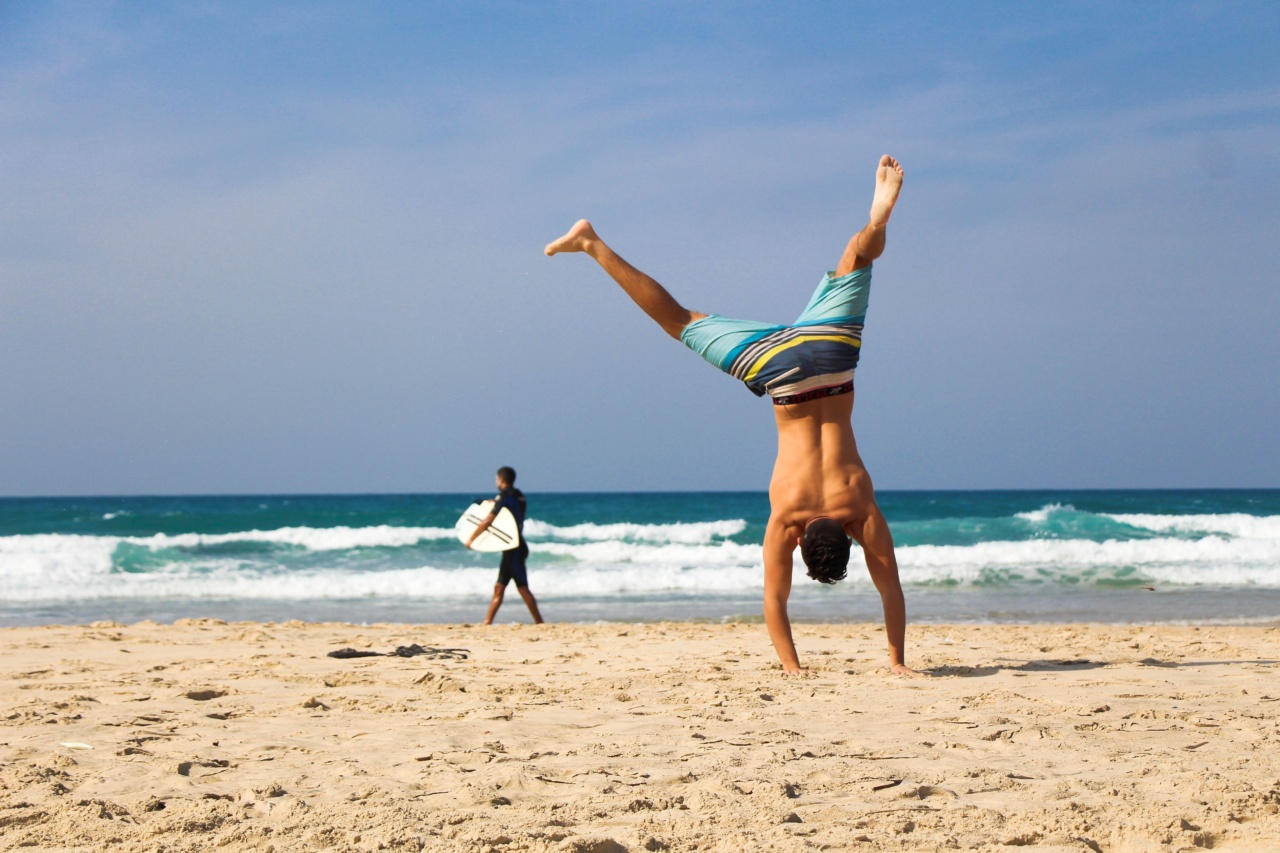Gymnastics is an excellent sport that requires strength, agility, and flexibility. Whether you are a beginner or an experienced gymnast, muscle soreness is a common issue that can interfere with your training and progress.
Muscle soreness after gymnastics is typically caused by microscopic tears in the muscle fibers. These tears occur when you engage in high-intensity gymnastics routines or training sessions that put a lot of stress on your muscles.
While muscle soreness is a normal process of muscle repair and growth, there are things you can do to prevent or alleviate it.
1. Warm-up and Stretching
The first step towards preventing muscle soreness is to warm-up. Warming up increases the blood flow to the muscles, which improves their elasticity and prevents tears. Start with some light cardio exercises like jogging, jumping jacks, or skipping.
After a few minutes, move on to stretching exercises to further loosen up the muscles. The stretches should focus on the muscles you will use during your gymnastics routine. Stretching reduces the risk of injury and improves flexibility, which helps to recover quickly from muscle soreness.
2. Stay Hydrated
Drinking water before, during, and after your gymnastics routine is essential to prevent muscle soreness. When you sweat, you lose water, which can cause dehydration. Dehydration can lead to muscle cramps and soreness.
Drinking plenty of water before and during your workout will help you stay hydrated and prevent muscle soreness.
3. Use Proper Technique
Using the proper technique during your gymnastics routine can help you avoid muscle soreness. Incorrect techniques put unnecessary stress on your muscles, causing tears and pain.
Always pay attention to your coach’s instructions and ask for feedback to ensure you are using the proper technique. Over time, proper technique will help you build stronger muscles and prevent muscle soreness.
4. Gradual Progression of Training
Taking your time when progressing the intensity or duration of your gymnastics routine is an effective way to prevent muscle soreness. Gradual progression allows your muscles to adapt to the increased stress, thereby avoiding injury and soreness.
Sudden or rapid increases in the intensity or duration of your routine can cause muscle strain, fatigue, and soreness. Keep track of your workouts and gradually increase the intensity or duration as your muscles adapt to the training.
5. Foam Rolling and Massage Therapy
Foam rolling and massage therapy are effective techniques for preventing and treating muscle soreness after gymnastics. Foam rolling is a self-myofascial release technique that uses your body weight to apply pressure to specific muscles.
This pressure helps to release tightness and adhesions, reducing soreness and promoting muscle recovery. Massage therapy is another technique that involves manual manipulation of the muscles, alleviating tension and improving blood flow.
Regular foam rolling or massage therapy can significantly reduce muscle soreness and help you recover faster from your gymnastics routine.
6. Proper Post-Workout Nutrition
Proper post-workout nutrition is crucial in preventing muscle soreness and promoting muscle recovery. Your body needs the right nutrients to repair and rebuild muscle fibers that are damaged during your gymnastics routine.
Eating a balanced diet that is high in protein can help you achieve this goal. Protein provides the building blocks necessary for muscle growth and repair. To aid muscle recovery, include protein-rich foods like eggs, lean meats, and legumes in your post-workout meal.
7. Take Rest Days
Rest days are essential in preventing muscle soreness after gymnastics. Rest days allow your muscles to recover and repair themselves, which reduces the likelihood of soreness and injury.
During rest days, you can engage in light exercises like walking or stretching to improve blood flow to the muscles. However, avoid intense gymnastics exercises on your rest days as they can cause more harm than good.
8. Use Ice and Heat Therapy
Ice and heat therapy are effective techniques for preventing and treating muscle soreness after gymnastics. Applying ice to the sore muscles reduces inflammation and pain, while heat increases blood flow, promoting healing and muscle recovery.
After your gymnastics routine, apply ice to the sore muscles for 10 to 15 minutes, then switch to heat for 15 to 20 minutes. Repeat the process several times throughout the day to reduce soreness and promote muscle recovery.
9. Get Enough Sleep
Getting enough sleep is crucial in preventing muscle soreness after gymnastics. During sleep, your muscles repair and recover, reducing soreness and preventing injury.
Aim to get at least 7 to 8 hours of sleep per night to allow your body to recover from the physical stress of your gymnastics routine.
10. Speak to Your Doctor
If muscle soreness after gymnastics persists despite the above measures, it is time to speak to your doctor. Your doctor can help determine if the soreness is due to an underlying condition that needs medical attention.
Your doctor may also prescribe pain relievers or suggest physical therapy to help alleviate the soreness.
Conclusion
Muscle soreness after gymnastics is a common issue that can interfere with your training and progress. Preventing muscle soreness requires a combination of warm-up and stretching, proper technique, gradual progression, hydration, rest, and nutrition.
Foam rolling, massage therapy, ice, and heat therapy can also help prevent and treat muscle soreness. With the right measures, you can prevent or alleviate muscle soreness and continue to progress in your gymnastics routine.

























